A lush green lawn is the dream of every lawn owner, gardener and homeowner. It is an excellent place for outdoor activities such as family gatherings and barbeque parties. However, if your lawn is lumpy and bumpy, it can become a bit of a headache. An uneven lawn looks unsightly, and it is also challenging to maintain when it comes to lawn care. In this article, learn how to level a large yard.
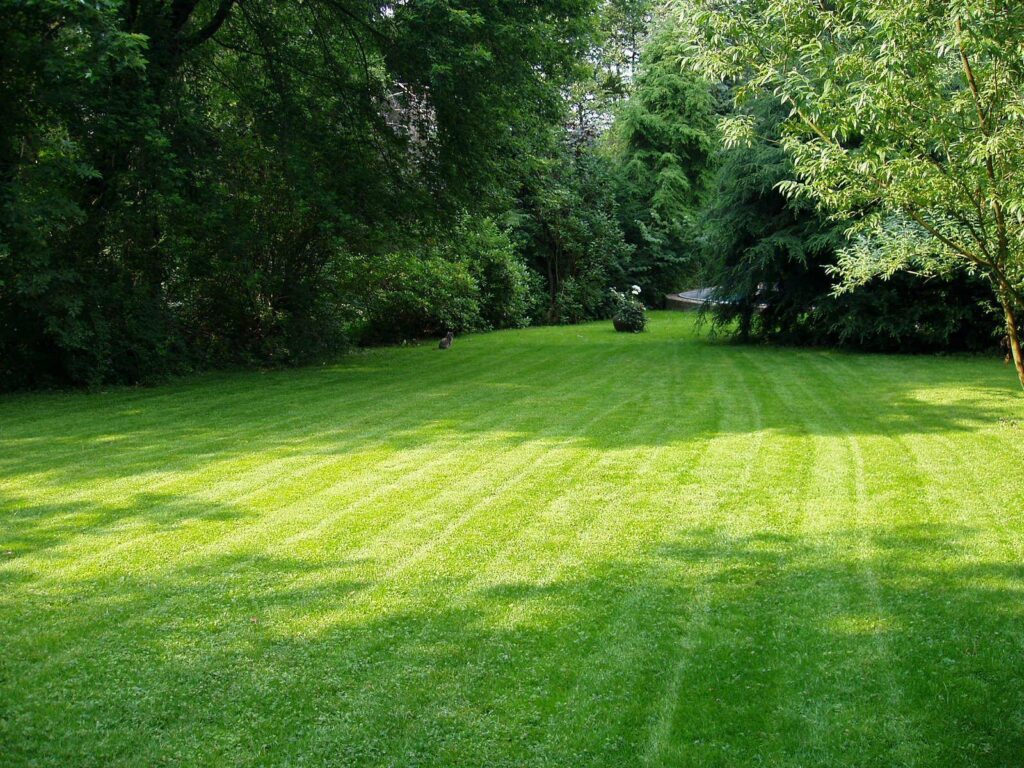
Having a leveled lawn is easy to take care of, and it looks aesthetically pleasing.
In addition to that, an uneven lawn with lumps and bumps is also a safety hazard as it can cause falls, trips and sprained ankles. The problems don’t end here, though. A poorly leveled lawn can also cause the water to stand on your lawn or enter the foundations of your home. So, how do you level an uneven yard?
To fix an uneven lawn, you will first have to mow your grass short to see all the lumps, bumps, holes, and pits. Also, remove thatch from your lawn if needed. Next, fill the holes and pits with compost or topsoil and smooth out the bumps with a rake. Finally, run the lawn sprinklers and reapply the soil mixture as needed.
Sounds easy, no? But there is a lot more that you need to know and understand. For instance, poor lawn grading, just like poor leveling, is equally harmful to your yard and home. So, let’s see how you fix and prevent an uneven lawn in more detail.
RELATED: Why and When Should You Add Iron To Your Lawn For The Best Results
Lawn Leveling Vs. Lawn Grading
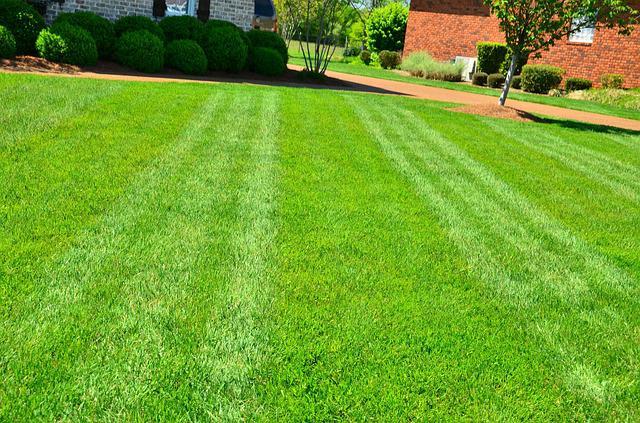
A well- or poorly graded yard can make the difference between excess water pooling on your lawn or running off.
While the words, leveling and grading, are often used interchangeably as if they mean the same thing, it is not right! There is a slight difference between the two terms, and as a lawn owner, you need to know that. Nonetheless, both lawn leveling and grading are essential when it comes to establishing and maintaining a lawn.
Leveling A Lawn | Why Level Your Yard?
Over time certain areas of your lawn can become uneven. There are many reasons why this could happen. Common reasons include drainage issues, soil compaction, lawn pests and various other natural and unnatural causes. Not only is it difficult to enjoy an uneven lawn, but the lumps and bumps on your lawn can become a safety issue for your kids and pets.
They might trip on these bumps while running around in the yard or turn their ankles in holes and depressions. In addition to that, an uneven lawn is harder to take care of and maintain. For instance, mowing a lawn with bumps and depressions is highly frustrating.
It does not matter if you use a walk-behind mower or a riding mower. You won’t be able to mow your grass properly if your lawn is not leveled correctly. That is why experts suggest that you level your lawn regularly, which will save you a lot of time and money.
A leveled yard will also ensure that all parts of your lawn receive equal water, and water does not just start pooling around in the depressions and holes of your yard. We will discuss how you can level an uneven lawn but first, let’s see what lawn grading is and why is it important?
Grading A Lawn | Why Grade Your Lawn?
You might think that a perfectly leveled lawn is an ideal lawn, but that is not the case. There are all sorts of problems that can come with having a perfectly flat lawn, chief among them the drainage issues that can damage your lawn and the foundation of your house.
There is an even worse situation. It is when you have the slope of your lawn pointed towards your home. It can cause the water to run downhill towards your home, seep through the foundations and then start collecting in your basement.
Lawn grading is the process of correcting the slope of your yard so that any precipitation flows away from the foundation of your home. Ideally, the lawns have a slope of around five percent, but what does a five percent slope mean?
It means that the surface of your lawn is six inches lower from a spot near your home to another spot on your lawn in the opposite direction. Nonetheless, you can set the grading of your lawn anywhere between three and twenty-five percent.
Just make sure that you do not set the slope too steep as it will result in soil erosion, and also, do not make the slope too flat as it will result in watering standing on your lawn.
RELATED: What Is The Best Time To Fertilize Your Lawn, Before or After Rain?
Benefits Of Leveling And Grading Your Lawn
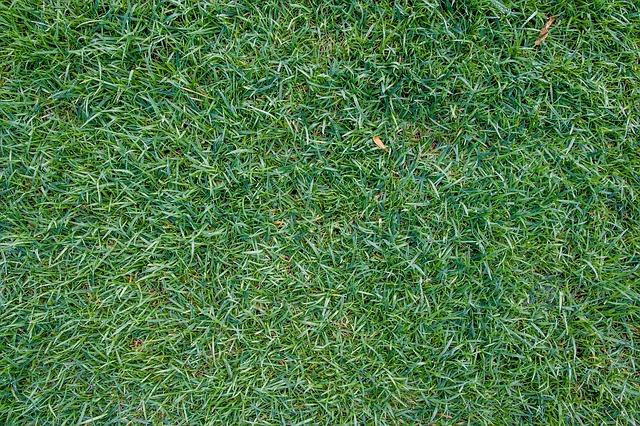
A properly leveled and graded lawn adds to the curb appeal.
As a homeowner, you must know that if you have drainage issues in your yard, it can cause a plethora of problems for your grass, lawn soil and, in extreme cases, for the infrastructure of your beloved home. In addition to that, it is hard to enjoy a lawn that has depressions, holes, bumps and lumps in it. That is why you must fix any leveling or grading issues in your yard, as it will save you a lot of trouble and hassle in the long run.
Here are a few other lawn problems that you can avoid by having a properly leveled and graded yard:
- Soil erosion
- Ice buildup in winter
- Improper and unsightly mower cuts
- A mushy or soggy lawn
- Water puddles
- Lawn pests and fungal infestations
- Grass, flowers, bushes and trees dying from suffocation
- Soil compaction
Not only a properly leveled and graded yard fixes the problems mentioned above, but it also adds to the appeal of your curb. It is easier to maintain, it is not a safety hazard for your kids and elderly, and most importantly, it can save you a lot of time and money in the long run.
What Causes An Uneven Lawn?
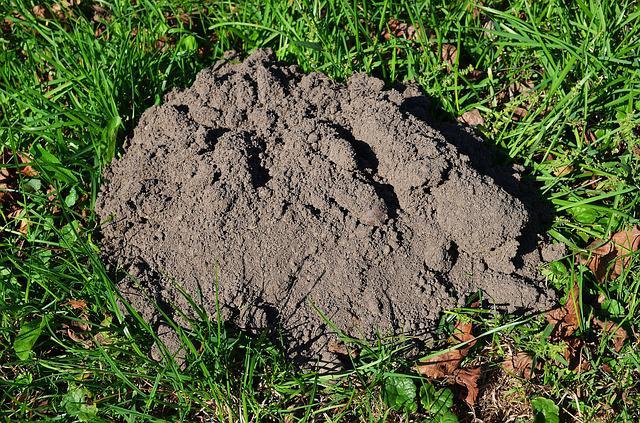
Photo Credit Mounds made by animals can also cause your lawn to become uneven.
Before you do anything to fix your unevenly leveled or graded lawn, you must understand the issues and problems that result in an unleveled or bumpy lawn. Fixing these issues before properly leveling and grading your lawn can help you fix the lawn unevenness issue in the long term. Here are the common reasons for an uneven lawn:
Leaking Pipes
Leaking pipes and faulty sprinkler systems are among the most common causes of uneven lawns. They can cause water to stand in your yard, resulting in soil compaction and depressions on your lawn.
Poor Drainage
Sometimes it is not the watering pipes but the drainage pipes that have been clogged, blocked or leaked, resulting in water puddles and depressions to form on your lawn.
Ground Settling
It is an issue that is pretty much unavoidable, especially in lawns with high foot traffic. In addition, freezing & thawing cycles can also cause your lawn to become uneven and bumpy.
Lawns Pests & Diseases
If you have a lawn disease, it will result in the formation of bare patches on your lawn which erodes faster, resulting in depressions. Similarly, if there are moles, rats and other lawn pests present in your yard, their activities can also make your lawn bumpy and uneven.
Leveling An Uneven Yard
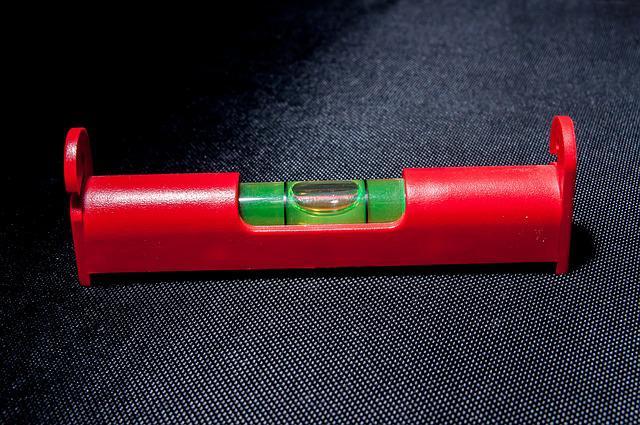
Having a line level with you can make leveling your lawn easier and quicker.
There are many ways in which you can fix an uneven lawn. For instance, you can use simple hand tools if your lawn only needs minor fixes, or you can rent an excavator and a bobcat if your lawn is large and needs major fixes. Similarly, if you do not have time, you can always hire a contractor to level your lawn.
However, most people who are reading this article will be fixing their lawns independently. So, here is a complete list of equipment you might need while leveling or grading your lawn. Make sure that you collect these items before fixing your uneven lawn.
- Compost
- Dethatching machine
- Flathead shovel
- Landscaping rake
- Lawn Mower
- Line-level, bricklayers’ level, or a string level
- Push broom
- Sand
- Thatch Rake
- Tiller
- Topsoil or Mulch
- Wheelbarrow or Cart
How Do You Level An Uneven Yard?
Once you have collected all the needed equipment to level your yard, take a walk around your lawn and pinpoint the areas that need to be fixed. Then, make a mental note, and you are good to go. Here are seven easy steps to fix your uneven yard:
1. Mow The Lawn
The leveling of the yard starts with mowing. So, mow the grass so short that all bumps and depressions become visible. However, do not cut it so short that it dies.
2. Dethatch The Yard
Along with mowing, dethatching will ensure that you get a better idea of your lawn leveling situation. Use a rake for smaller lawns, and use a dethatcher for larger lawns.
3. Remove Grass From Sunken Areas
If you see any depressions or sunken areas on your lawn that are deeper than two to three inches, get a shovel and put its blade at the outer boundary of the depression. Next, push the shovel down and make sure that you reach beneath the grassroots. Following that, remove grass by slowly prying up the sod with the shovel.
4. Fill The Sunken Areas
To fill the sunken areas of your yard, you will first have to prepare a top dressing mix. You can do it by putting together two parts sand, two parts topsoil and one part compost. The sand will help fix any drainage issues on your lawn, and the compost and topsoil will provide nutrients for the grass to grow. Once the top dressing mix is prepared, use it to fill out any depressions and holes in your yard.
5. Even Out The Lawn
Cover the entire yard with a thin layer of the topdressing mix once you have filled up the depressions and holes in your yard. This layer should not be more than 1/4 to 1/2 inches thick. Do not put too much topdressing mix on the grass; it might choke the plants. Following that, use a rake to level out the soil in your yard.
6. Water The Lawn
After covering your lawn with the topdressing mix, you will need to water the lawn. It will help the top dressing settle and fill up any air pockets in the soil. This will also revitalize your lawn and introduce nutrients from the soil mix to the lawn.
7. Reapply The Soil Mix
After watering the lawn, reapply the soil mix if you see any more depressions or leveling issues in your yard. You might have to do this a few times before you are able to completely level your yard, so do not hassle.
RELATED: When & How To Overseed A Lawn For The Best Results? A Simple & Easy Guide
How To Level A Slightly Uneven Lawn?
If you only have small bumps or depressions on your lawn, you can fix them quickly without any fancy lawn tools. Just step on them when the soil is soft or use a water roller to push the lumos down to fix the slight bumps.
And for filling small holes or depressions in your yard, make a topdressing mix and fill the depressions and holes with it. After applying it, make sure that you water the soil mix to fill out any air pockets and settle the soil.
How To Level A Moderately Uneven Lawn?
If you have a moderately sunken lawn or a few big depressions in your yard, simply filling the spots with a topsoil mix won’t cut it. To fix a moderately uneven lawn, you will first have to remove sod from the uneven sunken spots.
In order to remove sod from a sunken area, get a shovel and pry the sod out of the spot. Now fill the area with compost, topsoil and sand mixture and reapply the grass sod. Next, water the area, and you are good to go!
How To Level A Highly Uneven Lawn?
If your lawn has a lot of very deep depressions, is exceptionally bumpy and has a severely degraded slope, topdressing filling and sod replacement will not be enough here. You will likely have to take extreme measures in such cases, such as rebuilding the slope of your lawn and correctly grading it. Here is how you can do it:
- To establish a slope on your lawn, place stales across its length. You can also rent a transit level for more accurate grading of your lawn.
- Next, start removing the soil from high areas and fill the low areas. Finally, remove any obstacles and make sure the soil is evenly spread on the lawn.
- Measure the new grade and make sure it is between two and twenty-five percent.
- Now put the finishing touches to your lawn, reseed or resod the area, water it and make sure that you observe the yard for any irregularities in the coming days.
Conclusion | Leveling & Grading The Lawn
Keeping your lawn correctly leveled and graded is an essential aspect of lawn care. It increases the curb appeal and saves you from a plethora of lawn issues. But that’s not all. Having a properly graded lawn can also keep your home safe, as a poor or improper lawn slope can direct water toward your home and into its foundations.
If you do not want to go through the hassle of it or do not have time for it, you can always hire a professional to level and grade your lawn for you. We assure you that it will save you a lot of money and trouble in the long term.
Frequently Asked Questions
When to level the lawn?
The best time to level your lawn is in spring. It is a time when most grasses are actively growing, and it will give your lawn time to rebuild after the damage done from repairs.
Can I grade my yard myself?
If your lawn is simple and the grading project is simple, you can do it yourself. However, for more extensive lawns and complex projects, we suggest that you hire a professional.
How do you fill a large depression in your yard?
If there is a really large depression in your yard, you will have to remove the sod from the area and then refill the hole with a soil mix of compost, topsoil and sand. Once filled, resod the spot and water the area, and you are good to go.
Editor’s Recommendations
What Is The Best Time To Plant Grass Seed In Spring? Grow A Perfect Lawn!
How To Locate and Clean The Carburetor On A Lawn Mower? | A Beginners Guide
How To Get Rid Of Mushrooms In Lawn | Are Mushrooms Harmful To Grass?







